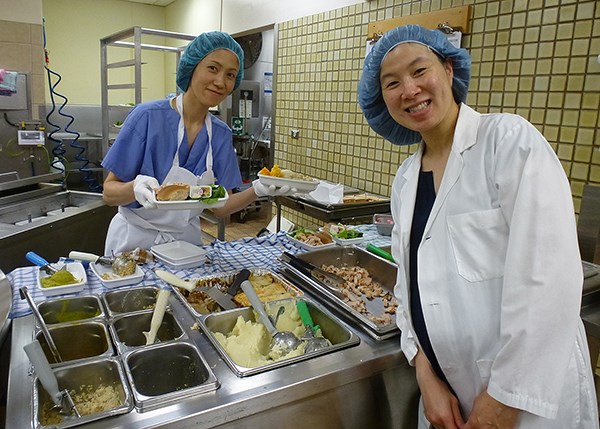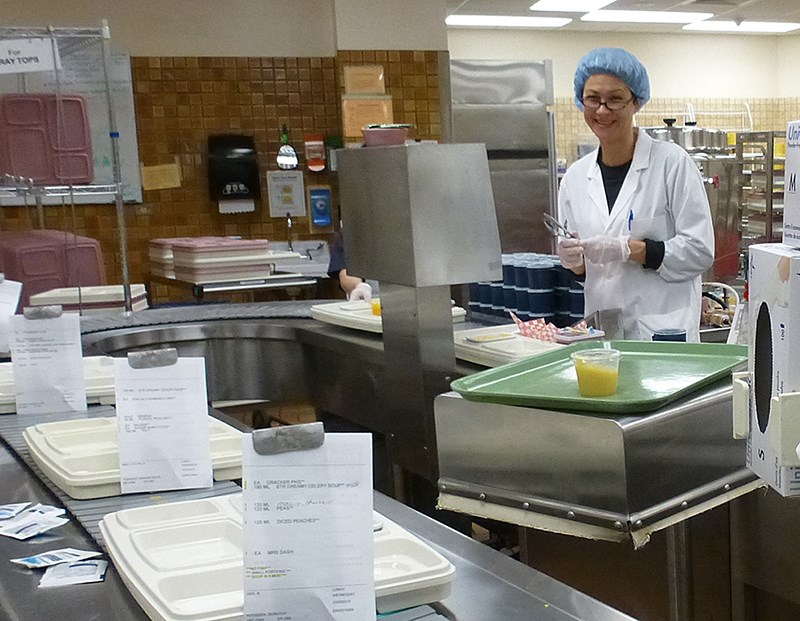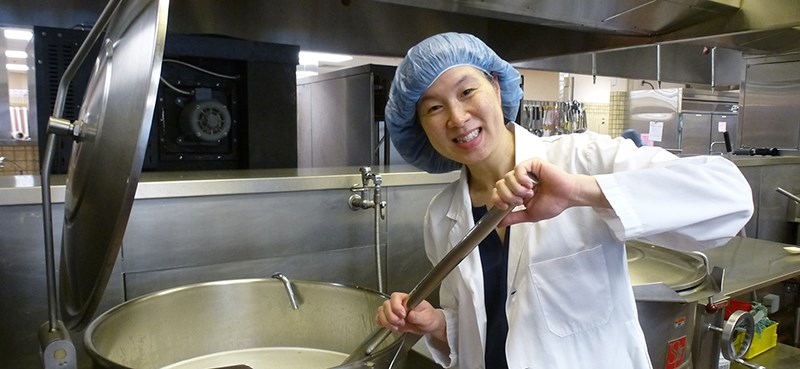A food revolution is taking place in the basement of Eagle Ridge Hospital where hundreds of meals are prepared daily for the Tri-Cities' sickest patients.
For the past three years, Fraser Health has been revamping its hospital food menu and charged with the job of taking food from bland to appetizing is Elaine Chu, support services manager, who understands it is not easy to make healthy food that people will like.
"There is this bad rap for hospital food but people don't think from the perspective that we are feeding sick people," said the Coquitlam resident who is a registered dietitian in the area of hospital food service management. "The bottom line is, what do you want to eat when you are sick?"
HOSPITAL FOOD GETS BAD RAP
Nobody expects hospital food to have the wow factor but with patient surveys suggesting food could be improved and new hospital food guidelines requiring higher fibre and nutrient content while drastically reducing the salt, it was time to make some changes.
So Chu, with a group of UBC dietetic interns, worked to come up with recipes and menu options that would appeal to patients.
Her test market? Given that the average age of ERH patients is 73 years, the residents of Eagle Ridge Manor, located on the ERH grounds, were the ideal focus group for the food experiment.
ERH FACED FOOD CHALLENGE

The problem is the manor residents weren't crazy about new food fads. Trendy quinoa, a high-protein grain, was a bust with manor clients, who also gave a spinach salad sprinkled with candied nuts the thumbs down.
"[The spinach salad] was something you would order at Earl's but the seniors did not enjoy it," Chu told The Tri-City News. "They couldn't even pick it up with the fork. We thought, 'OK, we learned something.'"
Now, after several months of testing, including six months of trying out new foods on manor residents, Chu's new menu for Eagle Ridge Hospital patients is being rolled out at several other Fraser Health hospitals.
Comfort food is still king but two popular new menu items are meal-sized soups and salads that jack up the nutrient and fibre content while also maintaining flavour and freshness.
Chu hopes to move the needle on patient food satisfaction and so far she seems to be succeeding, with patient satisfaction surveys noticeably higher in rating the food more appetizing, she said.
Among the new menu items are Moroccan soup, made from scratch with a tomato base, herbs and chickpeas; and chicken caesar salad, with spinach mixed in with crunchier romaine lettuce to make it easier for patients manage with a fork.
Ancient grain buns are also served, along with the meal-sized salads and soups for that extra pop of fibre.
IMPROVING SMELL, LOOKS, FLAVOUR

Chu admits it's not easy to make food that's appetizing in an institutional setting but her team works hard to mix in fresh fruit and vegetables with canned or frozen, uses Canadian products for the most part and whips up real boiled potatoes on site for mashed potatoes.
Even the fish is carefully chosen so it's not smelly — a big turn-off in a hospital setting where odours travel.
"I have to live within our means with a budget I have to adhere to. Everything needs to be carefully planned and monitored," says Chu, explaining further challenges of feeding ERH's 270 patients three times a day.
When The Tri-city News visited, four roasts were cooling after being pulled out of the oven for a traditional roast beef dinner. Huge containers of squash and vegetarian shepherd's pie were being doled out onto trays along with deserts, minced food for those with chewing issues, and sandwiches prepared on site. (ERH even sneaks vegetables into the salmon and chicken sandwiches in small pieces and uses cranberry spread to add taste. Bread alternates with buns to amp up sandwich variety, a big issue with patients.)
Where possible, cultural expectations are met with meals such as buttered chicken and a rice blend that is a combination of wild and brown rices (no nutrient-free white rice allowed). Vegan, vegetarian, no-beef and no-pork options are available, and if the salt content appears to be missing, that's because it is.
The hospital must keep to 2,300 mg a day of sodium (the average person consumes 3,400 mg a day), and so no salt is added to the food. "It's very challenging to provide taste given the low sodium level and the patients taste," Chu admits.
But herbs replace salt and, at the very least Chu hopes, the pickiest patients will appreciate the efforts that have gone into the hospital food make-over.



